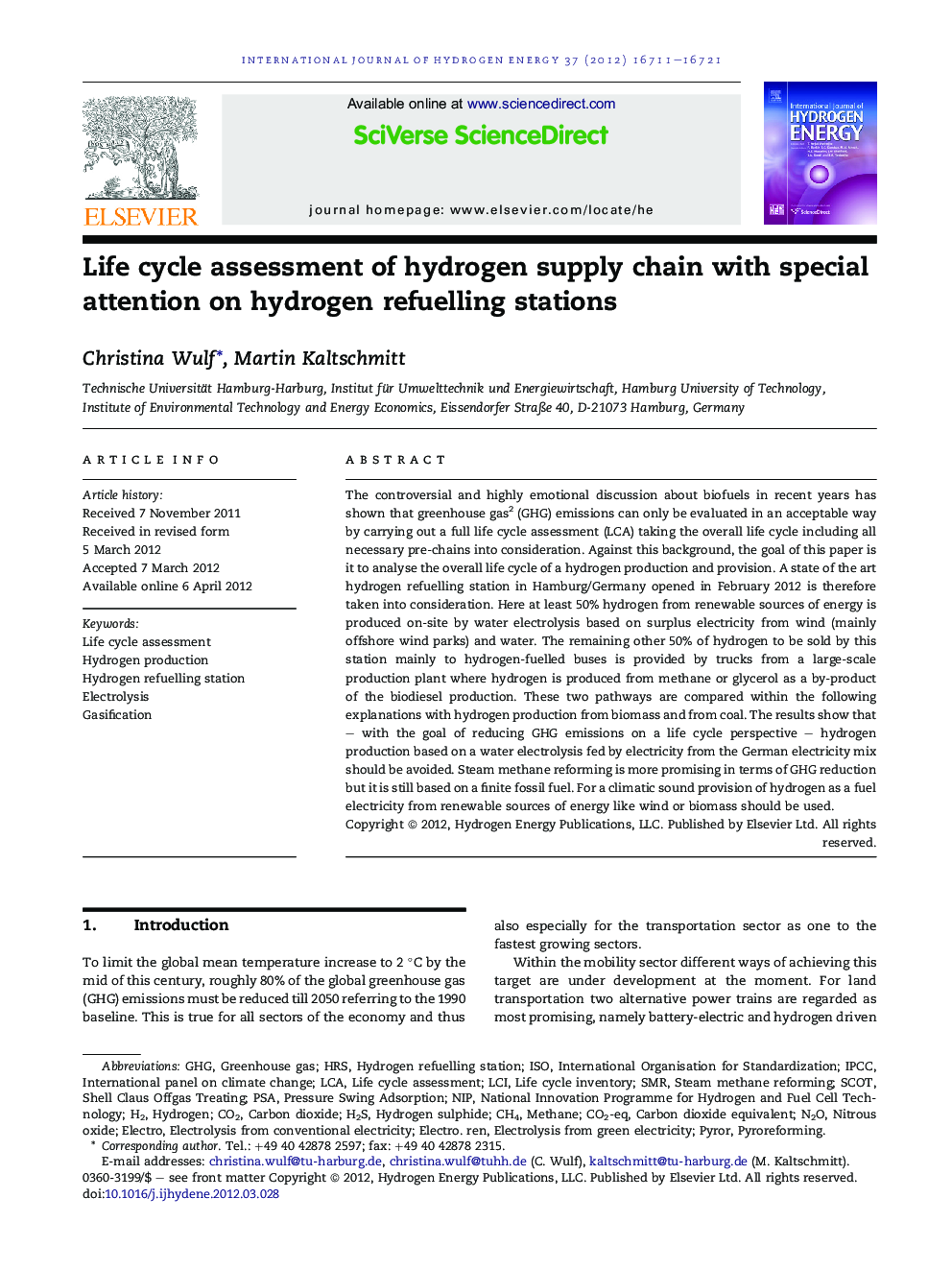| کد مقاله | کد نشریه | سال انتشار | مقاله انگلیسی | نسخه تمام متن |
|---|---|---|---|---|
| 1282204 | 1497548 | 2012 | 11 صفحه PDF | دانلود رایگان |

The controversial and highly emotional discussion about biofuels in recent years has shown that greenhouse gas2 (GHG) emissions can only be evaluated in an acceptable way by carrying out a full life cycle assessment (LCA) taking the overall life cycle including all necessary pre-chains into consideration. Against this background, the goal of this paper is it to analyse the overall life cycle of a hydrogen production and provision. A state of the art hydrogen refuelling station in Hamburg/Germany opened in February 2012 is therefore taken into consideration. Here at least 50% hydrogen from renewable sources of energy is produced on-site by water electrolysis based on surplus electricity from wind (mainly offshore wind parks) and water. The remaining other 50% of hydrogen to be sold by this station mainly to hydrogen-fuelled buses is provided by trucks from a large-scale production plant where hydrogen is produced from methane or glycerol as a by-product of the biodiesel production. These two pathways are compared within the following explanations with hydrogen production from biomass and from coal. The results show that – with the goal of reducing GHG emissions on a life cycle perspective – hydrogen production based on a water electrolysis fed by electricity from the German electricity mix should be avoided. Steam methane reforming is more promising in terms of GHG reduction but it is still based on a finite fossil fuel. For a climatic sound provision of hydrogen as a fuel electricity from renewable sources of energy like wind or biomass should be used.
Journal: International Journal of Hydrogen Energy - Volume 37, Issue 21, November 2012, Pages 16711–16721